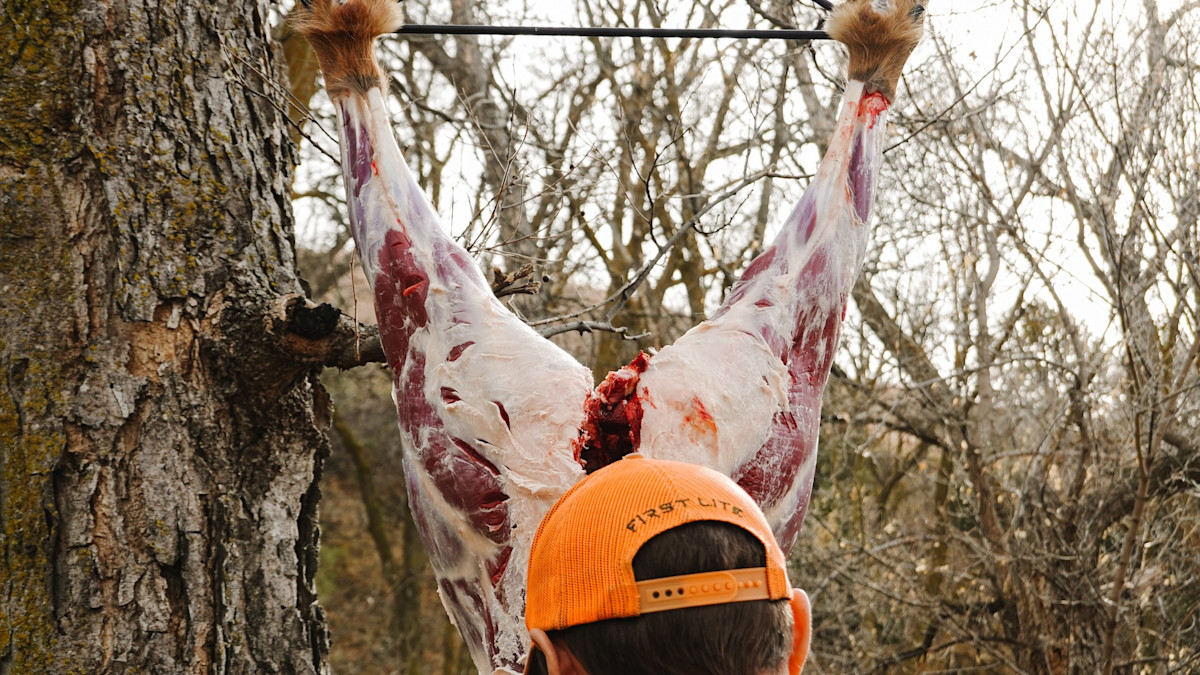
As all hunters know, the real work begins once an animal is on the ground. After a successful shot, the arduous task of gutting, quartering, transporting, and processing commences. And while many folks choose to get their hands dirty and do the processing at home, others prefer not to do it or simply don’t have the time to. Regardless of the reason, those hunters turn to local meat shops for processing—but willing butchers are harder and harder to come by.
According to longtime Nevada butcher Charlie Mori, the shortage of wild-game butchers can be traced back to Covid and its upending of meat production across the country. During Covid, commercial beef-packing plants bottlenecked the entire supply chain, resulting in two consequences: first, it drove grocery store prices of red meat through the roof, and second, it caused more and more consumers to turn to local ranches and butchers for custom-cut meat.
The paradigm of custom-cut meat is simple: anybody living in cow, pig, or lamb country can get in touch with a local rancher, purchase an animal (usually with a couple other neighbors or coworkers), and pay a local butcher to kill, cut, and wrap it—all without USDA oversight, since it’s technically not commercial resale.
For small-town butchers, it’s extremely lucrative—with rates of up to $7 per pound for processing. And because the butcher never takes ownership of the animal (usually, the client purchases it straight from the rancher and is simply contracting the butcher for processing), there’s nothing but labor and equipment expenses eating into profit margins.
Custom processing, Mori says, is essentially taking over the niche of wild-game processing, as it can be simpler and more profitable. Compared to custom-cut meat, wild game can be a serious hassle for butchers.
“Wild game had to be on a separate rail—you can’t hang it on the same rails as beef, and it can’t be anywhere the two could touch. Then, you need a separate walk-in cooler. And, as far as cutting meat, you can’t cut the wild game and then go right into custom work, or USDA (commercial retail) work. You have to go the opposite way: if you’re doing commercial work, it has to be done after the facility is totally clean and an inspector has looked at it and given you the okay to start.”
To work within the system, most processors who take wild game do it at the end of the day, after all commercial and custom-cut production is completed. Then they clean the facility top-to-bottom, an inspector signs off, and the process repeats the next day. On top of that, butchers taking wild-game meat have to deal with hunters—who admittedly aren’t always the easiest clientele—as well as blood-shot meat, gut or maggot contamination, and possibly spoilage (particularly with game brought in during archery season).
At the end of the day, for a variety of reasons, butchers are turning away from processing wild game—which hunting advocates suspect is leading to even fewer hunters in the woods, particularly in areas of the Midwest that are already dealing with an aging hunting demographic. Fortunately, though, hunting and conservation lobbyists are making progress on initiatives to bring game processors online and to keep them open in the face of a processing industry dominated and ruled by Big Beef packing plants (85% of beef in the US is processed by four companies: Tyson, JBS, Cargill, and National Beef).
Of particular note, the federal House of Representatives passed the 2025 USDA Appropriations Bill in mid-July, which included a clause expanding “the scope of the existing Meat and Poultry Processing Capacity—Technical Assistance Program to include assistance for processors interested in opening or expanding facilities that conduct custom-exempt wild game processing.”
The program will assist family-owned, minority-owned, rural, or tribal-owned game-processing businesses in applying for USDA grants and provide one-on-one guidance for startups or expansion projects. Previously, funding through the program was only available to shops working with commercial animal products.
“NDA is proud to be at the forefront of the venison processing capacity issue because these operations are critical to deer hunters and wildlife managers,” said Nick Pinizzotto, CEO of the National Deer Association.
“We’ve recently helped expand the scope of a technical assistance program at USDA to help processors start processing wild game or expand their existing operations. We’ve also helped connect wild game hunger relief programs tap into new funding opportunities, which helps keep processors in business and put excess deer to good use, and are working to secure additional financial assistance for new processing facilities.”
So far, programs in Pennsylvania, Maine, Illinois, and Louisiana have committed to the program, but a handful of other states are hoping to be plugged in as well.
But with the current state of the meat market, progress is bound to be slow. “Processors have raised their price so high,” Mori said, “that some of them are wanting $200 for 45 minutes’ worth of work on a little deer, all for 30 pounds of meat.” Mori suggests teaching people how to process their own meat—through videos, articles, or in-person classes—could help.
After decades in the commercial meat-processing industry, Mori now has just a small setup in his garage, where he cuts a handful of deer, elk, and antelope for friends every year. According to Mori, it’s easier than you might think to set up your own small-scale operation. But, admittedly, “I’ve been involved with it my whole life,” he said. “I was born and raised in a little plant.” And he’ll likely stay with it for years to come, along with only a handful of other small-scale game processors across the country. This fall, consider yourself lucky if you cross paths with one—they’re few and far between these days.





